fannyzeng's blog
Leather notebooks have a timeless appeal and are favored by many for their durability and elegance. If you're considering getting a custom leather notebook printed, there are several factors you should consider to ensure a high-quality result. In this article, I will guide you through the different aspects of leather notebook printing, including cover material options, inner pages paper stock, notebook size, binding options, post-press finishes, and tips for setting up and designing artwork.
Common cover material options for leather notebooks
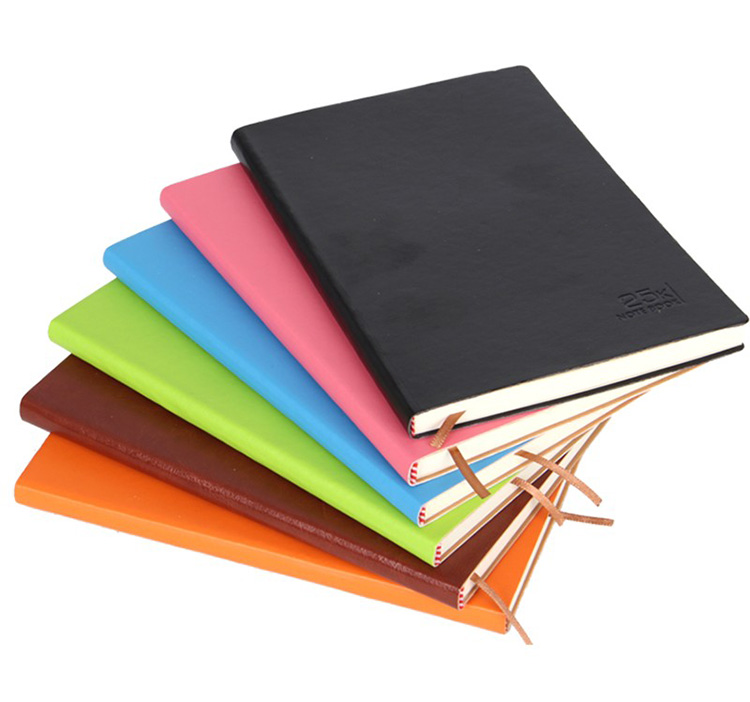
When it comes to choosing the cover material for your custom leather notebook, there are several options available. The most common materials used for leather notebook covers are genuine leather, faux leather, and bonded leather.
Genuine leather is a top choice for its premium look and feel. It is made from animal hides and is available in various finishes, such as smooth, textured, or embossed. Faux leather, on the other hand, is a synthetic material that mimics the appearance of real leather. It is a more affordable option and can be a great choice for those who prefer a vegan alternative. Lastly, bonded leather is made by bonding leather fibers together with a polyurethane coating. It offers a similar look to genuine leather but is more cost-effective.
Common inner pages paper stock and weight
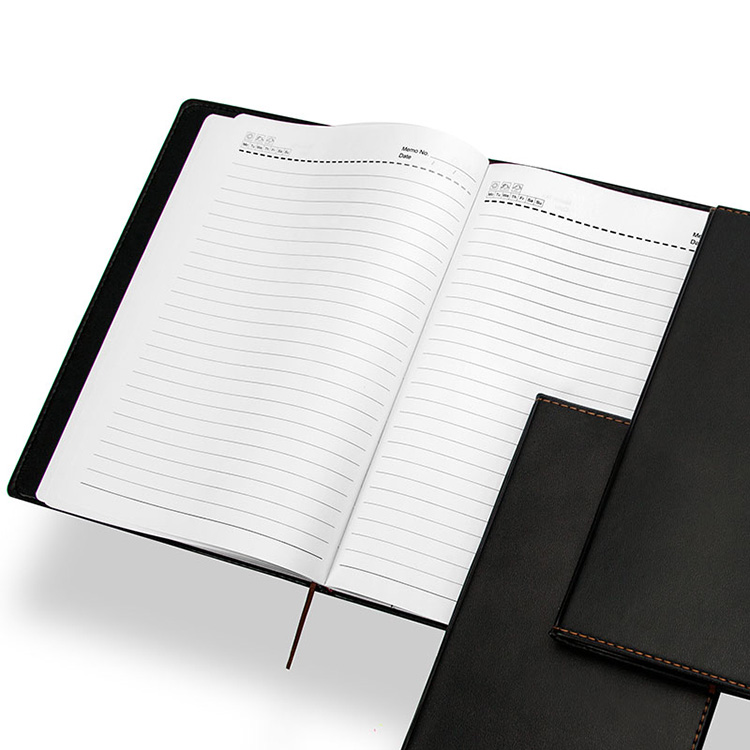
The choice of paper stock and weight for the inner pages of your leather notebook is crucial as it affects the overall look, feel, and functionality of the notebook. Uncoated paper is commonly used for its natural and textured finish, which provides a pleasant writing experience. The weight of the paper refers to its thickness and is measured in grams per square meter (gsm).
For a standard leather notebook, a paper weight between 80gsm and 100gsm is commonly used. This weight strikes a balance between thickness and portability. However, if you prefer a more substantial feel, you can opt for a higher gsm, such as 120gsm or even 140gsm. Keep in mind that thicker paper will add bulk to your notebook and may affect its overall flexibility.
Common size of leather notebooks
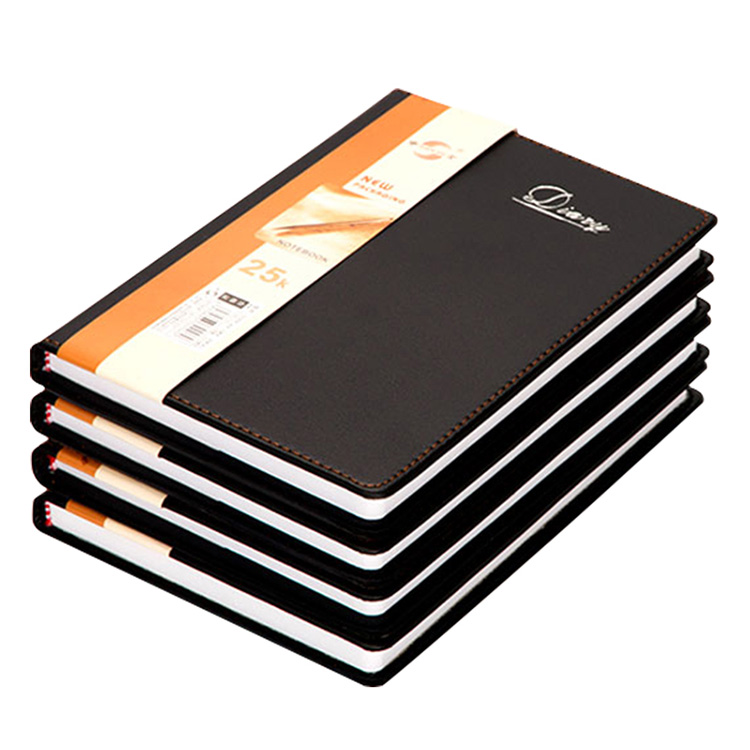
Leather notebooks come in various sizes, and choosing the right size depends on your personal preferences and usage. The most common sizes for leather notebooks are A5 (148mm x 210mm) and A6 (105mm x 148mm). These sizes strike a balance between portability and writing space. A5 notebooks are widely used for their versatility, while A6 notebooks are more compact and suitable for on-the-go use.
However, if you require a larger notebook for extensive note-taking or sketching, you can consider B5 (176mm x 250mm) or even custom sizes. Keep in mind that larger notebooks may be heavier and less portable.
Common binding options for leather notebooks
The binding option you choose for your leather notebook will determine its flexibility, durability, and overall aesthetic. Two common binding options for leather notebooks are flexible binding and hardcover binding.
Flexible binding, also known as perfect binding, is a popular choice for its flexibility and ability to lay flat when opened. This binding method involves gluing the inner pages to the spine of the leather cover. It allows for easy flipping of pages and provides a seamless writing experience. Flexible binding is ideal for journals, notebooks, and planners.
On the other hand, hardcover binding offers more sturdiness and protection to the inner pages. It involves attaching a hardcover to the spine of the notebook, providing added durability. Hardcover notebooks are commonly used for formal documents, diaries, and keepsakes. They offer a premium look and feel and can withstand rough handling and frequent use.
Common post-press finishes for custom leather notebooks
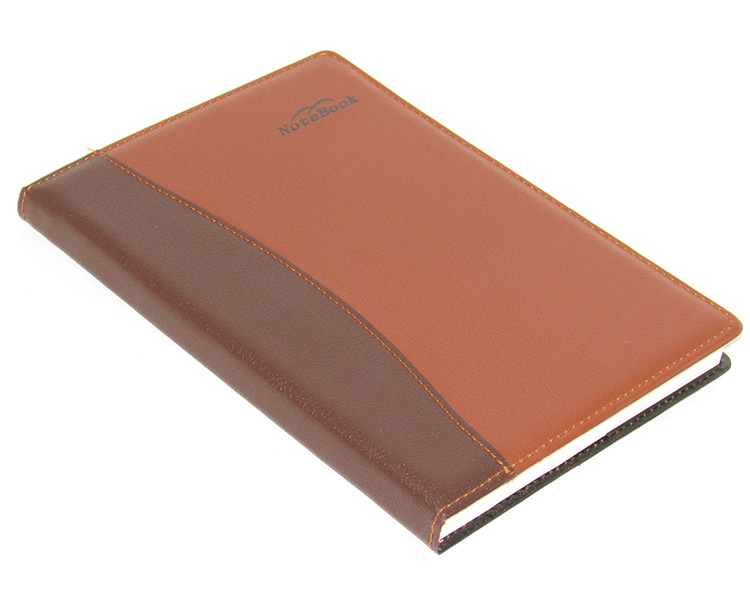
To add a touch of personalization and sophistication to your custom leather notebook. You can choose from various post-press finishes. These finishes enhance the visual appeal and make your notebook stand out. Some common post-press finishes for custom leather notebooks include embossing, debossing, and foil stamping.
Embossing involves creating a raised design or text on the leather cover by pressing it with a heated die. It adds a three-dimensional effect and a tactile element to your notebook.
Debossing, on the other hand, creates a depressed design or text on the cover, giving it a sunken appearance. Both embossing and debossing can be used to highlight your brand logo, initials, or any other design element.
Foil stamping is another popular finish that involves applying a metallic or colored foil to the leather cover using heat and pressure. It adds a luxurious and eye-catching element to your notebook. Foil stamping can be used to create shiny accents, borders, or even intricate patterns.
How to design and prepare your artwork for printing
When it comes to designing artwork for your custom leather notebook printing, it's essential to consider a few key factors to ensure a seamless and visually appealing result. Here are some tips to guide you:
Keep it simple: Avoid overcrowding the design with too many elements. Opt for a clean and minimalistic approach to maintain the elegance of the leather cover.
Choose the right colors: Select colors that complement the chosen leather material. Earth tones and neutrals often work well with leather for a sophisticated look.
Consider the placement: Take into account the location of the artwork on the cover. Ensure it is centered and properly aligned for a balanced and professional appearance.
Use high-resolution images: If you're including images in your design, make sure they are of high resolution to ensure a sharp and clear print.
Mock-up and test: Before finalizing the artwork, create a mock-up or sample to ensure the design looks as intended on the leather cover. Make any necessary adjustments before proceeding with the final printing.
In conclusion, when it comes to leather notebook printing, understanding the various options and considerations is essential for achieving a high-quality and personalized result. By selecting the right cover material, inner pages paper stock, size, binding option, post-press finishes, and designing the artwork thoughtfully. You can create a custom leather notebook that is not only visually appealing but also functional and durable.
Now that you have a comprehensive understanding of leather notebook printing. It's time to bring your ideas to life and create a custom leather notebook that reflects your style and personality.
Start your leather notebook printing journey today and create a custom leather notebook that truly stands out!
If you are a author come to custom your own pop up book, choosing a right size is very important. In this article, we will provide you some tips on how to choose a right size to create your pop up book.
What's a pop-up book?
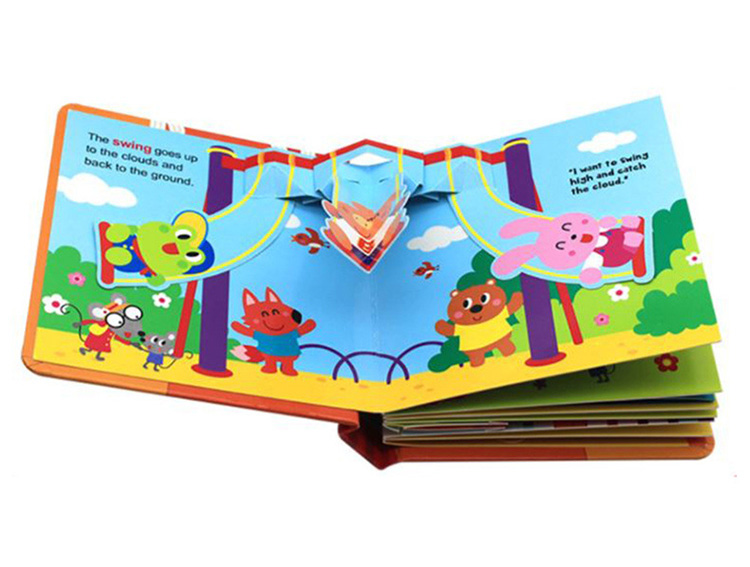
Pop-up books are a delightful form of interactive storytelling that have captured the hearts of both children and adults for generations. These books bring stories to life through their three-dimensional elements that pop up when the pages are opened. The magic unfolds as characters, objects, and scenery leap off the page, creating an engaging and immersive reading experience.
The history & origins of pop-up books
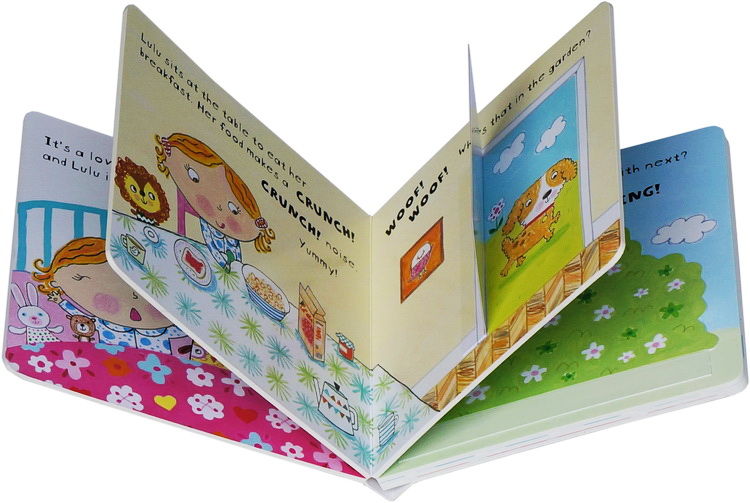
Pop-up books have a rich history that dates back centuries. The origins of these captivating books can be traced back to the 13th century, where they were initially known as "movable books." The earliest known movable book, "The Astronomical Clock," was created by an anonymous author in the late 13th century. However, it wasn't until the 18th century that pop-up books gained popularity. Thanks to the work of Robert Sayer, who introduced movable flaps and pull tabs.
The popularity of pop-up books continued to grow in the 19th century with the works of renowned authors. Such as Robert Louis Stevenson and Lothar Meggendorfer. These books became treasured possessions, cherished for their innovative designs and interactive nature. Today, pop-up books have evolved into a diverse and creative art form, captivating readers of all ages.
What is the popular and standard size of a pop-up book?
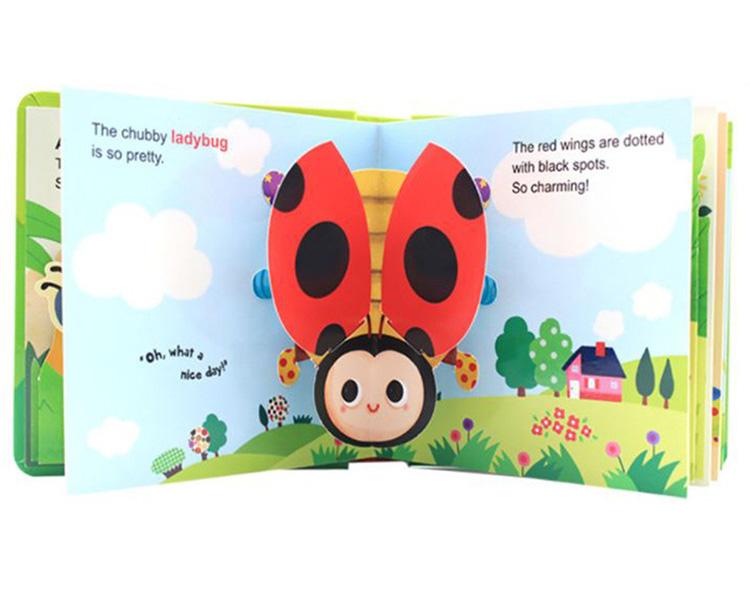
When it comes to pop-up books, there isn't a one-size-fits-all approach. The size of a pop-up book can vary depending on various factors, including the target audience, intended purpose, and design complexity. However, there are some popular and standard sizes that are commonly used in the industry.
Common size for child pop up book are 6 x 6 inches and 8 x 8 inches. This size provides a good balance between portability and the ability to create intricate pop-up designs. It is often chosen for children's pop-up books due to its manageable size and the ease with which children can hold and interact with the book.
Common size for adult pop-up books are 8.5 x 11 inches and 10 x 10 inches. These format allows for larger and more elaborate pop-up scenes, making it ideal for visually stunning pop-up books aimed at adults. The larger size provides more space for detailed artwork and intricate paper engineering.
Factors to decide a pop-up book size
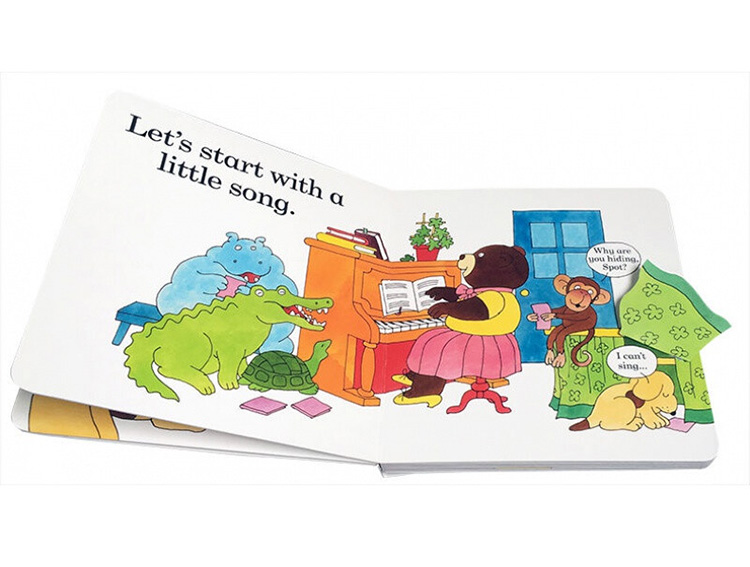
When deciding on the size of a pop-up book, several factors should be taken into consideration.
Target audience of pop up bookFirst and foremost, the target audience plays a significant role in determining the size. For children's pop-up books, smaller sizes are often preferred to ensure that young readers can comfortably hold and manipulate the book. On the other hand, larger sizes may be more suitable for adult pop-up books, allowing for more intricate designs and details.
Complexity of pop up book designThe complexity of the pop-up designs is another crucial factor. If the book includes highly intricate and detailed pop-up scenes. A larger size may be necessary to accommodate the complexity of the engineering and artwork. Conversely, if the pop-up designs are simpler and less intricate, a smaller size may be sufficient.
Purpose of pop up bookAdditionally, the purpose of the pop-up book should be considered. Is it intended for educational purposes, entertainment, or both? Educational pop-up books often benefit from larger sizes to provide ample space for informative content alongside the pop-up elements.
How to select the right size to custom your pop-up book
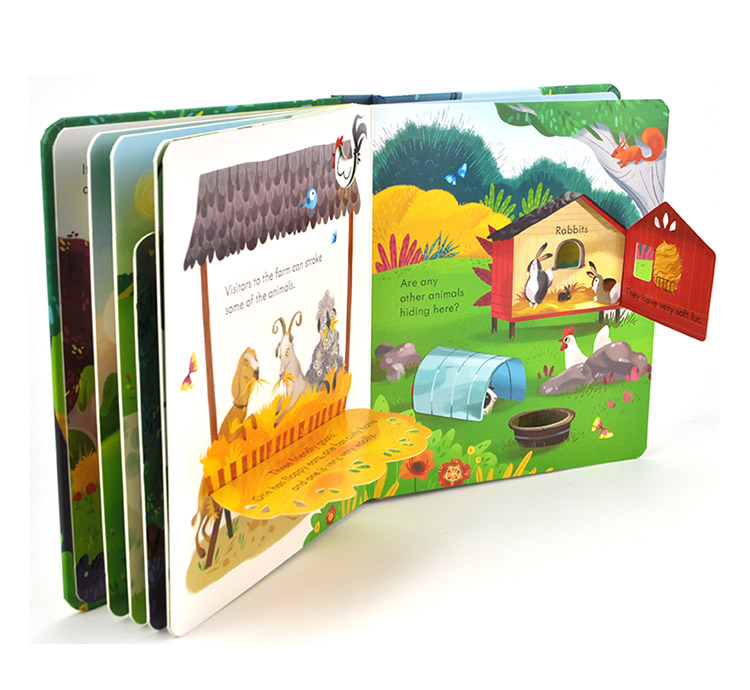
If you're considering customizing a pop-up book, selecting the right size is essential to ensure the final product meets your expectations. Here are a few steps to help you choose the perfect size for your custom pop-up book:
Determine your target audience:Identify the age group or demographic you are catering to. Consider their preferences and capabilities when it comes to handling a pop-up book.
Assess the complexity of your designs:Evaluate the intricacy of the pop-up scenes you envision. If you have highly detailed and complex designs, a larger size will allow for better execution.
Consider the purpose of your book:Determine whether your pop-up book is primarily for entertainment, educational purposes, or both. This will influence the size and layout of the book.
Consult with a professional printer:Reach out to a reputable pop-up book printing company for expert advice. They can provide guidance on the ideal size based on your requirements and budget.
By taking these steps and considering the various factors involved. You can ensure that the size of your custom pop up book aligns with your vision and meets the needs of your target audience.
In conclusion, choosing size of a pop-up book can vary depending on factors. Such as the target audience, complexity of the pop-up designs, and the intended purpose of the book. By carefully considering these factors and following the steps outlined. You can select the perfect size for your custom pop-up book and create a captivating reading experience for your audience.
If you're interested in exploring the world of pop-up books, consider customizing your own! Contact us today to bring your imagination to life with our high-quality custom pop-up book printing services.
In today's digital age, where we are constantly bombarded with screens and notifications. There is something refreshing about putting pen to paper and jotting down our thoughts, ideas, and dreams. A custom hardcover journal is the perfect companion for this purpose, offering durability, style, and a personal touch.
In this article, we will explore everything you need to know custom hardcover journals printing, like factors that affect their printing cost, popular cover and inner paper options, post-press finishing options,etc.
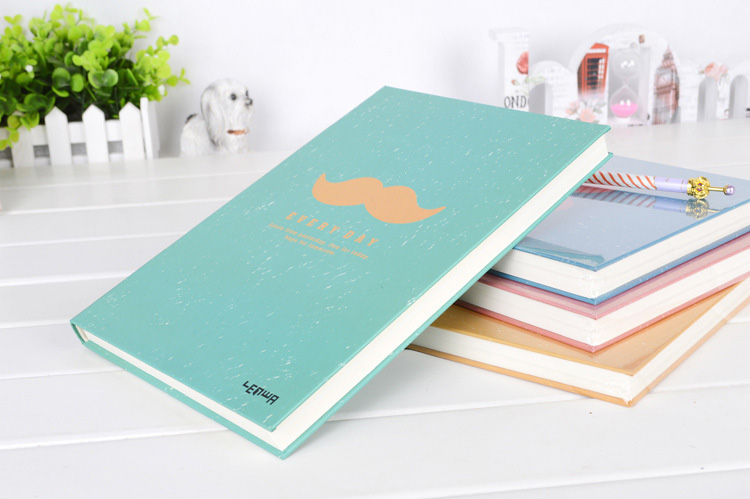
Benefits of custom hardcover journal
Custom hardcover journals offer a multitude of benefits compared to their softcover counterparts.
Firstly, the hardcover provides durability and protection. Ensuring that your cherished thoughts and memories are preserved for years to come. Whether you carry it in your bag or leave it on your desk, a hardcover journal can withstand the wear and tear of daily use.
Secondly, custom hardcover journals exude a sense of elegance and sophistication. With a plethora of design possibilities, you can create a journal that reflects your personality or brand identity. From embossed logos to foil stamping, the options are endless. Imagine the satisfaction of opening a beautifully crafted hardcover journal, knowing that it is uniquely yours.
Furthermore, a custom hardcover journal elevates your writing experience. The sturdiness of the hardcover provides a stable surface for writing. Making it easier to capture your thoughts without the hassle of finding a solid base. Additionally, the weight and texture of the hardcover add a tactile dimension to your writing journey, enhancing the overall sensory experience.
Factors affecting the cost of hardcover journal printing
There many factors that influence hardcover journal printing cost.
Printing quantityOne of the primary factors is the quantity of journals you wish to print. Larger quantities often result in lower unit costs, as the printing process becomes more efficient. On the other hand, printing a small batch of custom hardcover journals may incur higher per-unit costs.
Complexity of your journal designAnother factor to consider is the complexity of your design. Intricate artwork, multiple colors, and special finishes such as embossing or spot UV coating require additional production steps, which can increase the overall printing cost. It is crucial to strike a balance between aesthetics and budget to create a stunning custom hardcover journal that meets your requirements.
Material choiceThe choice of materials also plays a significant role in the cost of hardcover journal printing. Premium cover materials such as leather or linen tend to be more expensive than standard paper options. Similarly, the selection of inner paper, whether it is plain, lined, or grid, can affect the overall cost. It is essential to communicate your preferences to the journal printing company to find a balance between quality and affordability.
Popular cover and inner paper options for custom hardcover journal
When custom hardcover journal printing, the cover and inner paper options are crucial for creating a visually appealing and functional product. Let's explore some popular choices in both categories.
Cover OptionsPu Leather: Known for its timeless elegance, leather covers add a touch of luxury to your custom hardcover journal. Whether you prefer genuine or faux leather, it offers durability and a sophisticated look.
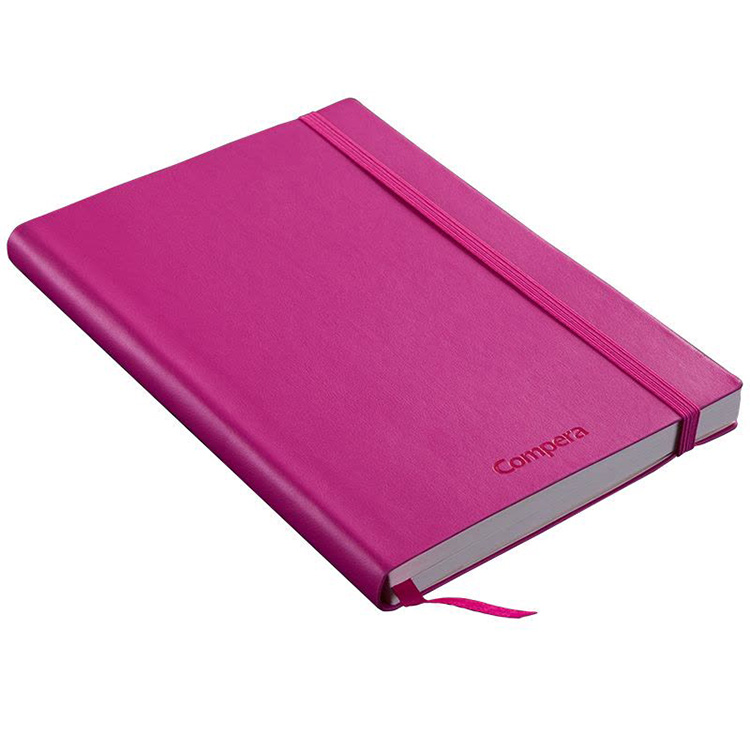
Linen: Linen covers provide a more textured and earthy feel. They are available in various colors and offer a unique tactile experience, making your journal stand out.
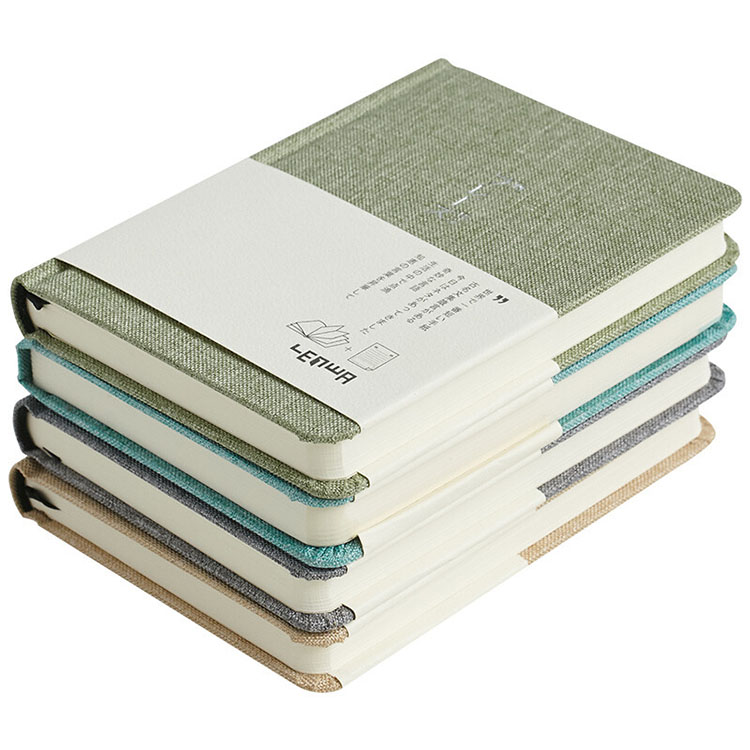
Hardboard: If you are looking for a more contemporary and eco-friendly option, hardboard covers are an excellent choice. Made from recycled materials, they offer a sleek and modern aesthetic.
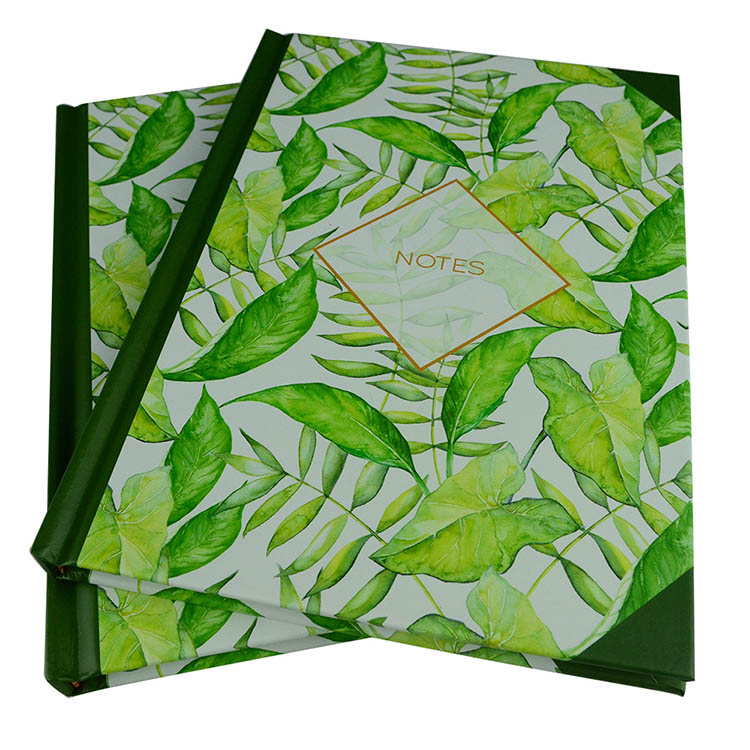
Wood-free paper: Wood-free paper also known as uncoated paper. Due to the surface is uncoated, which provides more friendly reading and writing experience, make it ideal for custom journal printing. The common paper weight for custom hardcover journal printing are 80gsm, 100gsm, 120gsm uncoated paper.
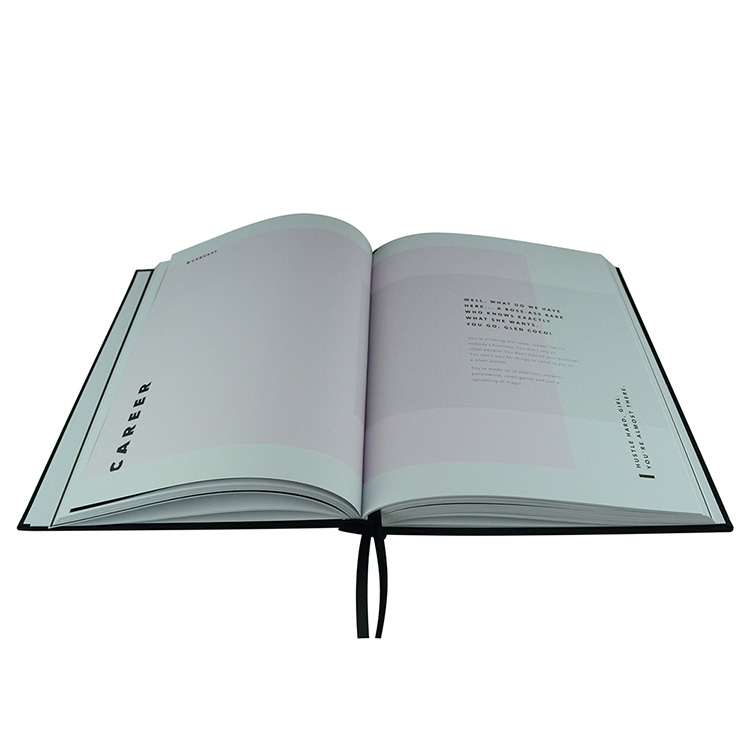
Post-press finishing options for custom hardcover journal
Once the custom hardcover journals are printed. Various post-press finishing options can enhance their appeal and functionality. Let's explore some popular choices.
Embossing and debossingEmbossing and debossing are techniques that create a raised or depressed design on the cover of the journal. These finishes add a tactile element, making your journal visually striking and inviting to touch.
Foil stampingFoil stamping involves applying a thin layer of metallic or colored foil to specific areas of the journal cover. It adds a touch of elegance and can be used to highlight important elements such as logos or titles.
Spot uv coatingSpot UV coating is a glossy finish applied to specific areas of the journal cover, creating a contrast between matte and shiny surfaces. It adds a sophisticated and eye-catching effect, drawing attention to specific design elements.
Ribbon bookmarkA ribbon bookmark is a practical and stylish addition to a custom hardcover journal. It allows you to easily mark your page and adds a touch of luxury to the overall design.
Popular sizes of custom hardcover journal
Custom hardcover journals come in a variety of sizes to suit different needs and preferences. Some popular sizes include:
A5: A versatile and portable size, A5 journals are ideal for everyday use. They offer enough space for writing and sketching, while still fitting comfortably in most bags.
B6: Slightly smaller than A5, B6 journals are compact and easy to carry. They are perfect for those who prefer a more lightweight option without compromising on functionality.
A4: A4 journals provide ample space for those who need more room for writing, drawing, or planning. They are ideal for artists, designers, or anyone who requires a larger canvas.
How to design artwork for hardcover journal printing
Designing artwork for custom hardcover journal printing requires careful consideration. To ensure a visually appealing and cohesive final product. Here are some tips to guide you through the process:
Define your purpose:Determine the intended use of your custom hardcover journal. Is it for personal journaling, professional note-taking, or promotional purposes? Understanding the purpose will help you create a design that aligns with your goals.
Create a layout:Plan the layout of your journal, including page numbers, headers, footers, and any other desired elements. Consider the placement and size of your artwork to ensure it complements the overall design.
Choose complementary colors:Select a color palette that reflects your personal style or brand identity. Use colors that harmonize with each other and evoke the desired emotions or associations.
Consider typography:Choose fonts that are legible and appropriate for the content of your custom hardcover journal. Experiment with different font sizes and styles to create a visually appealing hierarchy.
Add personal touchesIncorporate personal elements such as quotes, illustrations, or photographs to make your custom hardcover journal truly unique and meaningful.
In conclusion, custom hardcover journal printing offers a multitude of benefits, from durability and elegance to an enhanced writing experience. With a custom hardcover journal, you can embark on a writing journey that is not only functional but also a reflection of your individuality or brand identity. So why wait? Start creating your custom hardcover journal today and bring your thoughts and ideas to life.
As a children's book printer, I understand the significance of printing quality when it comes to captivating young readers. The vivid illustrations and engaging stories can come to life only when the printing is done flawlessly. Whether you are considering custom hardcover children's book printing or board book printing. It is crucial to choose a printing option that will deliver the best results for your unique book.
The difference between hardcover and board book
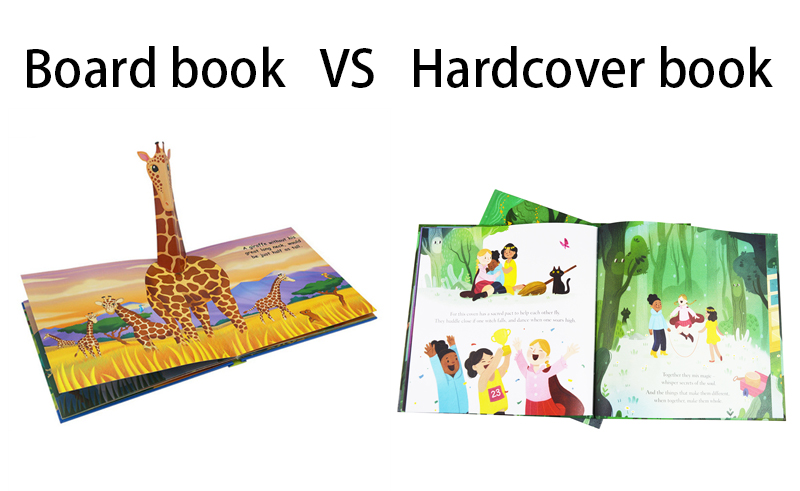
Before delving into the pros and cons of each printing option. Let's first understand the difference between board book vs hardcover.
Hardcover books are known for their durability and sturdiness. They have a solid cover made from thick cardboard, which protects the pages and extends the lifespan of the book.
Board books are specifically designed for young children and toddlers. They have thick, sturdy pages made from compressed paperboard, making them resistant to tearing and chewing.
Pros and cons of hardcover children's book printing
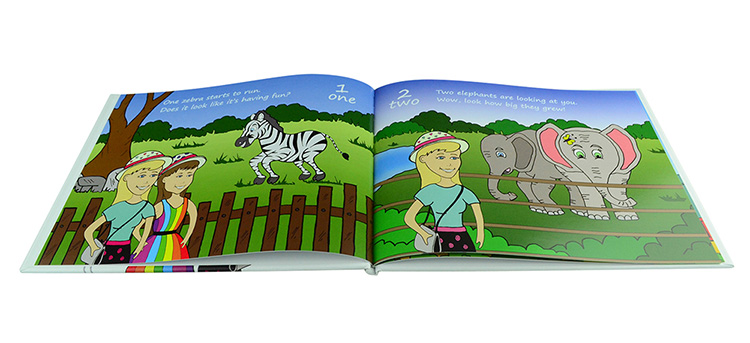
Hardcover children's book printing offers several advantages. Firstly, the durability of a hardcover book ensures that it can withstand the rough handling of young readers. This makes it a popular choice for books that will be passed down through generations.
Additionally, hardcover books have a premium feel and are often perceived as more valuable. Making them an ideal choice for special editions or collector's items.
However, hardcover printing can be more expensive than other options. And the weight of the book may make it less convenient for young children to carry around.
Pros and cons of board book printing
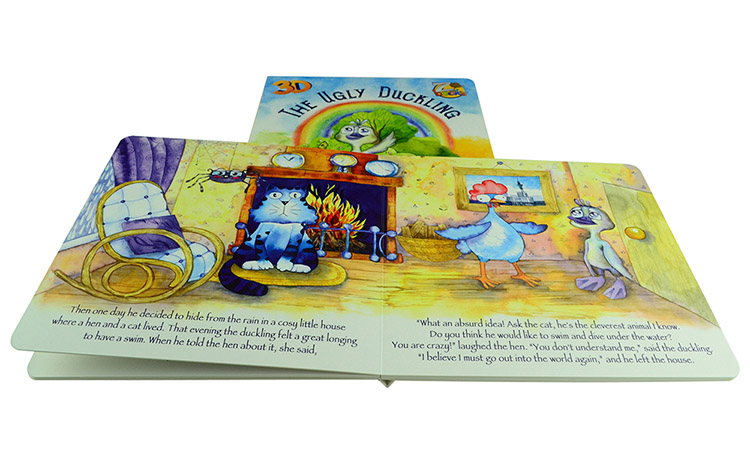
Board book printing, on the other hand, has its own unique benefits. The sturdy pages of a board book make it suitable for babies and toddlers who are still developing their motor skills. These books can withstand drooling, chewing, and bending without getting damaged easily. Board books are also lightweight and easy to handle, allowing young readers to explore the book independently.
However, board books have a limited lifespan compared to hardcover books. As the pages may become loose over time, and they may not have the same premium look and feel.
Factors to consider when choosing between hardcover book and board book printing
When deciding between custom hardcover children's book printing and board book printing. There are several factors to consider.
Firstly, think about the target age group for your book. If your audience consists mainly of infants and toddlers, board book printing may be the more suitable option. But, if your book is intended for older children and will be cherished for years to come. Then custom hardcover book printing may be the better choice.
Additionally, consider the content and purpose of your book. If you have intricate illustrations or a longer storyline, a hardcover book may do justice to your work. If your book focuses on simple concepts and shorter stories, a board book could be the perfect format.
Customizing your children's book printing options
One of the advantages of custom printing is the ability to personalize your children's book to align with your vision. Whether you choose hardcover or board book printing. You can customize various elements such as the size, shape, and design of the book. You can also select special finishes like embossing, foil stamping, or spot UV coating to enhance the visual appeal of your book.
Additionally, consider the type of binding that best suits your book. Hardcover books usually have sewn or adhesive bindings. While board books have a unique binding that allows the pages to lay flat without coming loose.
How to find a reliable and high-quality book printing company
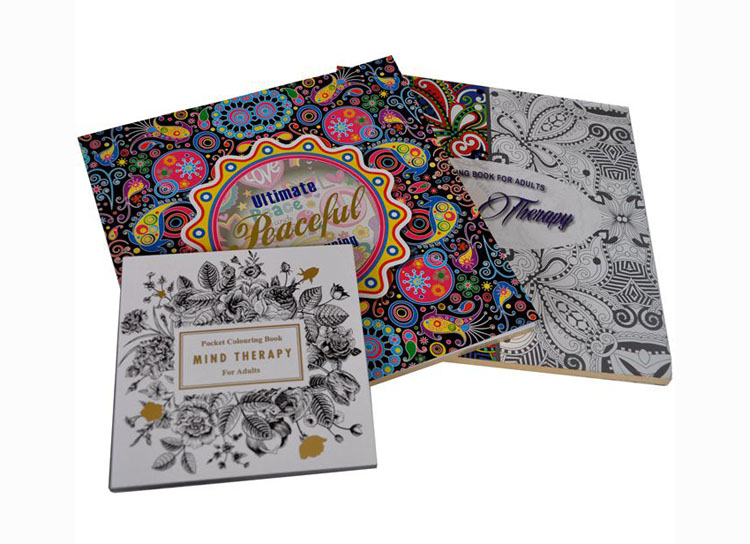
To ensure that your children's book is printed to the highest standard. It is essential to find a reliable and high-quality book printing company. Start by researching various printing companies. Then reading customer reviews to gauge their reputation. Look for printers that specialize in children's book printing. And have experience in handling custom projects.
Request samples of their previous work to assess the quality of their printing. Besides, consider their customer service, turnaround time, and ability to meet your specific requirements. Remember, finding a trustworthy printing partner is crucial in bringing your children's book to life.
Pricing considerations for custom hardcover children's book printing
The cost of custom hardcover children's book printing can vary depending on several factors. These include the size and page count of the book, any special finishes or enhancements, and the quantity of books ordered.
While hardcover printing may be more expensive than other options. It offers durability and a premium look that can justify the investment. To ensure that you are getting a fair price, get quotes from multiple printing companies and compare their offerings. Remember to consider the overall value that the printing company provides. Including their expertise, customer service, and printing quality.
Pricing considerations for custom board book printing
Custom board book printing typically has its own price considerations. The cost of board book printing is influenced by factors. Such as the size, thickness, and page count of the book, any special finishes or coatings, and the quantity ordered.
While board book printing may be more affordable than hardcover printing, it is essential not to compromise on quality. Ensure that the printing company uses safe and non-toxic materials that are suitable for young children. As with hardcover printing, get quotes from multiple printers. Then compare their prices and offerings to make an informed decision.
Conclusion:
The choice between custom hardcover children's book and board book printing depends on various factors. Such as the target age group, the content of the book, and your specific requirements. Both options have their own advantages and considerations, so it is important to weigh them carefully. Consider the durability, visual appeal, and convenience of each option, as well as the cost and value provided by the printing company.
By making an informed decision, you can ensure that your children's book is printed to the highest quality and resonates with young readers for years to come.
If you are ready to bring your children's book to life with custom printing. Contact us today for a quote and explore the possibilities for your unique project.
